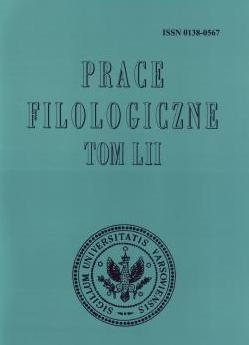Cechy składniowe i semantyczne jednostki {do syta}
Syntactic and Semantic Features of the Lexical Unit {do syta}
Author(s): Emilia KubickaSubject(s): Language and Literature Studies
Published by: Wydział Polonistyki Uniwersytetu Warszawskiego
Keywords: {do syta,} jednostka leksykalna; właściwości składniowe; właściwości semantyczne; {do syta} (~‘_one’s fill’) lexical unit; syntactic features; semantic features
Summary/Abstract: The examples from the PWN-Corpus and from Polish language dictionaries show that the phrase {do syta} is used not only in relation with eating but also looking, listening, talking and sleeping. The phrase {do syta} in the context of {najeść się do syta} (to eat one’s fill) is redundant so in the further survey only examples not connected with eating will be taken into consideration. The lexical unit do syta enters into syntactic relation with semantic operations {na- się, wy- się} and {po- sobie} and builds the so-called sative (exhaustive) verbs. These verbs convey the notion of an agent who performs an activity which, for some reasons, is abandoned. The unit in question adds some information about the repeated activity being finished and about the fact that the activity evoked the agent’s reaction.
Journal: Prace Filologiczne
- Issue Year: 2007
- Issue No: 52
- Page Range: 189-200
- Page Count: 12
- Language: Polish

